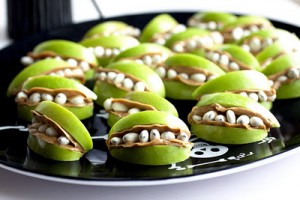- Plan what you are going to eat for the forthcoming week and write a shopping list.
- Stick to your shopping list when you are in the supermarket.
- Take a pen and tick off the items on the list as you go, so that you buy everything you needed and so that you don’t stray from the list.
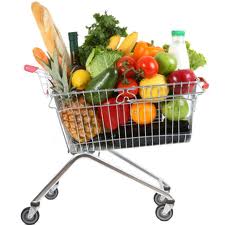
- Don’t be swayed by special offers on unhealthy foods.
- Don’t go shopping when you are hungry.
- Don’t buy foods that you know you will not be able to resist such as biscuits and chocolate.
Posts Tagged ‘nutritional concepts’
Tips for Food Shopping when Trying to Lose Weight
Monday, April 29th, 2013Healthy Easter Breakfast for Kids
Monday, March 25th, 2013Three ingredients, three steps to make these light pancakes within minutes!
Ingredients:
3 eggs
250ml milk
125g plain flour
Method:
- Beat eggs and milk together in large bowl, then beat in flour until batter is smooth.
- Lightly coat a 20cm frying pan on medium-high heat with cooking spray.
- Make one pancake at a time by dropping a large spoonful of batter onto pan and tilting to cover the whole surface of the pan evenly. Cook until golden, turning once, about 2 minutes per pancake.
- Have fun decorating your pancakes, for example Easter Bunny pancakes as shown here.
10 Top Tips for Getting and Staying Physically Active
Monday, February 18th, 2013|
1. Get Moving. |
Take the stairs instead of the lift, Walk short journeys you have to make, get off the bus a stop early. |
|
2. Start slowly and build up. |
Don’t try to do too much too soon. Instead, take a gradual approach, and build up your activity routine as you become fit. |
|
3. Stuck for time? |
As much as 2 x 15 minutes of exercise can make the difference. |
|
4. Desk exercises. |
While seated, perform some exercises to help strengthen and tighten your muscles. |
|
5. Do things you enjoy. |
You are more likely to stick with exercises that you find fun. |
|
6. Find a partner. |
People who exercise with a partner or group are more likely to stay on track. |
|
7. Drink plenty of water. |
Good hydration before, during and after exercise is essential to your wellbeing. |
|
8. Write it down. |
An exercise diary can help you chart your progress and provide motivation on those days that you just don’t feel like getting off the couch. |
|
9. Reward yourself. |
Set yourself weekly exercise goals and reward yourself with a new book, massage etc. at the end of the week if you have achieved these. |
|
10. Play some music. |
Exercising to your favourite songs can helps keep you motivated. |
Nutrition tips to help avoid colds and flu
Monday, November 12th, 2012The cold and flu season has begun. While there is no way to cure the common cold or the flu, healthy eating during cold and flu season can help prevent you getting sick.
Researchers have found positive links between immune function and components in food.
Garlic may boost your immune system, increasing resistance to infection and stress. Raw garlic is an expectorant – good for chest infections and coughs.
Yoghurts and other dairy products contain probiotics, beneficial bacterial with immune boosting benefits. Also check dairy product labels for vitamin D. Early research suggests low levels of vitamin D may be linked to a seasonal increase in colds and flu and a higher incidence of respiratory infections.
Vitamin C, found in citrus fruits and juices, may also help the body’s immune system.
Zinc, found in meat, chicken, peanuts and peanut butter, plays an important role in the proper functioning of the immune system in the body
Healthy eating during cold and flu season means getting the daily requirement of essential vitamins and minerals by eating a balanced diet that contains a variety of foods from all food groups.
Boost your immune system
Healthy bodies have an easier time fighting off infection. To stay healthy and boost your immune system:
- Get plenty of rest. Get at least seven to eight hours sleep a night.
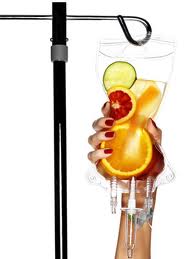
- Eat a well-balanced diet. Healthy foods such as vegetables, fruit, grains, etc. are an important part of keeping your body nutrition at its best. Processed, fatty, and sugary foods don’t give the immune boosting protection that healthier food does.
- Exercise regularly.
- Reduce stress levels.
- Keep well hydrated. Dehydration inhibits the immune system’s functioning.
- Cut back on unhealthy habits, such as smoking and over consumption of alcohol
Studies have shown that a session of moderate physical activity produces positive effects on the immune system. Over time, this means catching fewer colds and other upper respiratory tract infections.
Healthy Halloween Treats
Monday, October 22nd, 2012While researching for this Halloween blog I came across this recipe for Monster Mouths. They look really good and are also a healthy alternative to sweets and fizzy drinks.
Follow this link for the recipe http://www.thecookingphotographer.com/2011/10/monster-mouths.html
What is Glycaemic Index?
Monday, October 1st, 2012What is Glycaemic Index (GI)?
Glycaemic Index is a measure of how high your blood sugar gets after eating a food. It was originally designed to help people with diabetes to make better food choices but research has found that it might be useful in helping people to get to and stay at a healthy weight.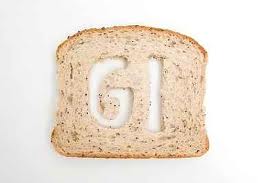
How does GI help with weight?
High blood sugar from high GI foods cause increases in the amount of insulin your body makes. Insulin helps to lower blood sugar levels after a meal but it also is important in helping your body to store other nutrients including fat. High levels of insulin encourage your body to store fat, rather than burn it. This means that when blood sugar increases it can encourage your body to store fat.
When you eat low GI foods your blood sugar level stays lower (but not too low) and so insulin stays lower and this can encourage your body to burn fat. Low GI foods are also more satisfying and help keep your metabolism running faster. This is why they are important for helping anyone to lose weight or to keep off weight they have already lost.
Which foods are low and which are high GI?
Only foods with carbohydrate can raise blood sugar levels. Any foods with no carbohydrate are low GI foods. Foods with no carbohydrate include meat, chicken, fish and eggs.
|
High GI Foods |
Low GI Foods |
|
• Most breads – brown or white • Potatoes • Cooked fruit • Some root vegetables e.g. parsnips • Foods high in sugar e.g. soft drinks, sweets, biscuits, cakes, etc • Popcorn • Crisps
|
• Porridge, high fibre breakfast cereals • Bread made with 50% oats or more • Pasta – brown or white • Brown rice and Basmati Rice • Pulses – beans, peas and lentils • Fresh fruit, fruit smoothies • Meat, poultry, fish, eggs • Dairy products • Most vegetables and salads
|
Happy Heart Month
Monday, September 10th, 2012September is Happy Heart Month. 
Follow the link below to see the great work that is being done to promote your heart health by the fantastic organisation that is the Irish Heart Foundation.
http://www.irishheart.ie/iopen24/irish-heart-month-2012-t-8_201_1068.html
Back to School – Healthy Packed Lunch Ideas
Monday, August 20th, 2012We all know how difficult it can be to come up with different, healthy and fun lunch box ideas – and that is why we end up packing up the same lunches over and over again! Packed lunches, just like any other meal, should have a balance of ingredients to fit in with healthy eating guidelines.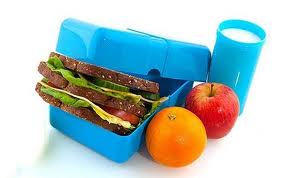
To help avoid packed lunch boredom, Nutritional Concepts has some simple ideas to make sure your child’s packed lunch packs a few surprises as well as a healthy, nourishing meal in the middle of the day:
- Offer a variety of foods throughout the week. Just like adults, kids can get bored with having sandwiches everyday for lunch. Why not try using the same fillings, but add excitement by changing the bread e.g. pitta bread, bagels or tortilla wraps.
- Make sure food looks good as well as tasting good by adding different colours and textures. Forget about your typical lettuce and tomato salad. Instead try a pasta salad or potato salad. Cook and drain the pasta or potatoes and mix with a little mayonnaise or olive oil, then add some cut up vegetables such as tomatoes, cucumbers and carrots. If you like you can also include some sliced turkey, chicken or ham. If you decide to pack a traditional sandwich, try cutting the bread with fun shapes using a cookie cutter.
- Sometimes kids, especially younger ones, don’t like to eat a whole sandwich or bowl of food. Instead you can try preparing cut up cubes of cheese, grapes, baby tomatoes, carrot sticks and mini crackers. Finger foods are really very appealing for all ages!
- Always include a drink in the lunch box to make sure they don’t become dehydrated during the afternoon. Water, fruit juice and milk are all healthy choices.
- Make sweet stuff, such as chocolate, biscuits and cakes an occasional treat rather than everyday items.
Overall, as well as something to drink, a healthy packed lunch should contain:
- One portion of vegetables or salad and one portion of fruit (fresh, canned or dried can all count).
- One portion of a milk or dairy item such as milk, cheese, yoghurt or a yoghurt drink.
- One portion of meat, chicken, fish, eggs, peanut butter, beans or other protein source.
- One portion of a starchy food, such as bread, pasta, rice, noodles or potatoes.
Fish Oils and Being Physically Active
Tuesday, July 31st, 2012Joint pain is not pleasant, and today, more and more people are beginning to suffer from joint pain at earlier ages than before. Active people, are complaining about sore, stiff and painful joints, and looking for a good natural relief from this discomfort. Fish oils are considered a dietary means of helping to deal with painful joint pain.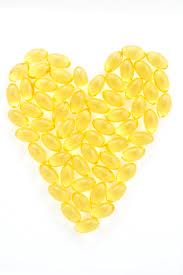
Why fish oil?
Well, fish oil contains EPA and DHA, commonly referred to as omega-3 fatty acids. Omega 3 has a number of beneficial effects on the body, including the joints. Omega-3 fatty acids have been shown to reduce inflammation by interfering with the production of inflammation-producing chemicals which stimulate pain nerves in the tissues. When you add these benefits to the others known to be associated with fish oil like lowering triglycerides, reducing the risk of blood clots, and benefiting both the heart and brain, there is no doubt that it is a beneficial joint supplements.
What foods contain omega 3?
Oily fish is the richest source of Omega 3. This includes salmon, mackerel, rainbow trout, fresh tuna, herring, shrimp, crab, sardines and pilchards. Weaker sources include flaxseed or linseed oil, rapeseed or canola oil, walnuts, and dark green vegetables.
How much should I eat?
2 portions of fish per week, at least one of which must be oily is sufficient for general health. This is equivalent to 500mg of Omega 3. 3-4 portions of oily fish, or 1000mg, is strongly recommended if you have heart disease or are at risk of heart disease.
Do I need a supplement?
You do not need a supplement if you are eating oily fish as recommended. If you dislike fish or have high requirements for omega 3, taking omega 3 in supplement form should be considered. There are many Omega 3 supplements on the market.
Takeaways
Monday, May 21st, 2012Takeaways are often cheap, convenient and satisfying but, unfortunately, they are not always very healthy. Here are some tips on foods to avoid and healthier options when ordering your favourite takeaway.
Fish and chips
- Try to avoid: thin-cut chips, pies such as cheese and onion pie or steak and kidney pie, jumbo sausage.
- Healthier options: fish coated in breadcrumbs, mushy peas, thicker-cut chips without salt.
Italian
- Try to avoid: large deep-pan pizzas, pizzas with the crust stuffed with cheese, triple cheese with pepperoni pizzas, creamy pasta sauces, garlic bread.
- Healthier options: small or medium pizza with a thin base and vegetable or lean meat topping, tomato-based pasta sauces, bruschetta.
Chinese
- Try to avoid: sweet and sour battered pork balls with special or egg fried rice, prawn toast, spring rolls.
- Healthier options: crab and corn soup, steamed dumplings, steamed vegetables and plain boiled rice, steamed fish, chicken chop suey, Szechuan prawns.
Thai
- Try to avoid: fried rice, fish cakes, spring rolls, prawn crackers, satay skewers with peanut sauce and sweet and sour dishes.
- Healthier options: clear soups such as tom yum, salads, stir-fried meat, fish or vegetable dishes, steamed seafood dishes, such as fish or mussels.
Indian
- Try to avoid: any creamy curries such as korma, passanda or masala with pilau rice, naan, bhajis, pakoras and poppadoms.
- Healthier options: tandoori or madras with chicken, prawns or vegetables, plain rice and chapatti.
Kebab and burgers
- Try to avoid: large doner kebab with mayonnaise and no salad, burgers with cheese and mayonnaise, thin-cut chips, chicken or fish patties deep fried in batter.
- Healthier options: shish kebab with pitta bread and salad, grilled burgers made from lean fish or meat (beef or whole chicken breast) and without cheese and mayonnaise.

